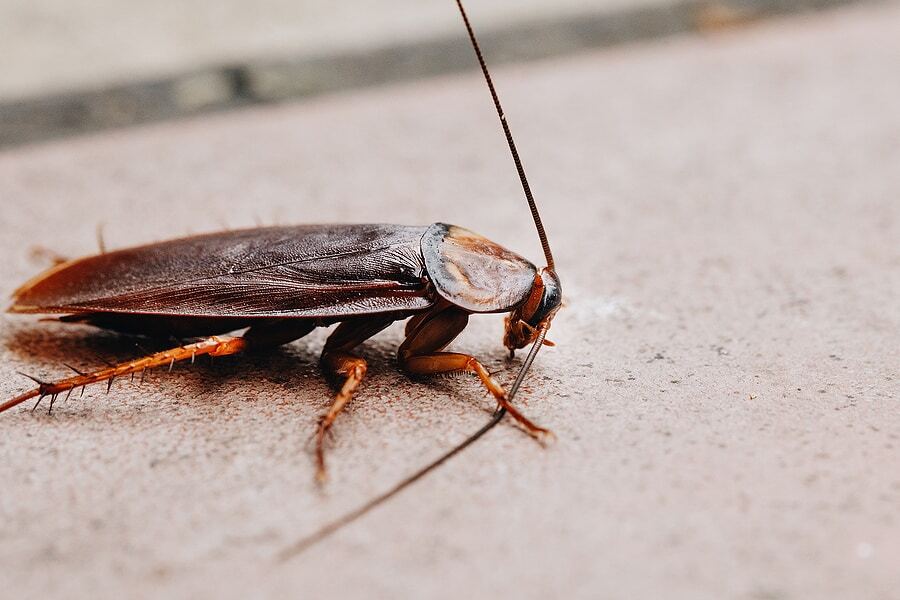Cockroaches: Types and Prevention Tips
Jan 12, 2022 | Pest Control
The cockroach might just seem like a creepy, annoying nuisance, but it can cause more damage than expected. Cockroaches transmit over 30 different kinds of bacteria – E. Coli, Salmonella, and more. In addition to this, they can also trigger asthma and allergy attacks as their droppings, saliva and shed skin contain allergens that increase asthma symptoms, especially in children.
As one of the most common household pests, it’s important to keep roaches under control to lessen the effects they cause. Here we breakdown the types of cockroaches you could be seeing in your home and how you can prevent them in the future.
Types of Cockroaches
- American Cockroach: The largest of the house-infesting cockroaches, the American cockroach is found throughout the United States and worldwide. They are reddish-brown with a yellowish figure-eight pattern on the back of their head. They are often found in basements and sewers. These pests are attracted to moist surfaces and can also be found in bathrooms, kitchens, and laundry rooms.
- Brown-Banded Cockroach: This species first entered the U.S. in 1903 and is now found nationwide. The brown-banded cockroach got its name from the two light brown bands that appear across its wings. They prefer warmer, drier, and higher locations in a room and can be found mostly in cabinets and behind picture frames. This species will typically hide its egg cases in or underneath furniture.
- German Cockroach: The German cockroach is the most common species found worldwide and is found across the U.S. They prefer warm and humid spaces but are typically found in spaces where humans eat, such as kitchens. They can be identified by their light brown body with two dark brown stripes on their back.
- Oriental Cockroach: The Oriental cockroach exhibits a dark reddish-brown to shiny black color and is found in the northern regions of the United States. They are commonly found in sewers and enter homes through drains or door thresholds. This species is considered the dirtiest of all cockroaches due to the strong odor that they create.
Prevention Tips
- Seal Entrances: With cooler weather approaching, cockroaches are seeking warmer hiding places. Ensuring all openings in doors, windows, and foundations are sealed is the first step to take. Replace old weather-stripping and make sure there are no holes in window screens to help stop these intruders.
- Focus on the Kitchen: One of the most effective ways to prevent cockroaches is to begin pest-proofing in the kitchen. Clean up any spills or crumbs immediately and take the trash out regularly to prevent roaches from wanting to stay. The pantry can also be included by this – consider storing your food in sealed containers.
- Limit Moisture: Roaches need water to survive. Dripping faucets and leaky pipes will attract these pests inside your home. Look throughout the house for any loose pipes and seal them as soon as possible. To dry up areas in your basement, employ a dehumidifier to take care of that. If you have a crawlspace, consider enclosing your crawlspace to ensure no moisture is found.
- Declutter: Cockroaches like to find hiding places during the daytime, but by nightfall they emerge. Decluttering and cleaning out items to limit their hiding spaces may help in preventing them in the long run. Some ways to declutter include old newspapers, utilizing plastic containers over cardboard, and making sure clothing isn’t piled on the floor.
While prevention can help keep cockroaches away, sometimes it’s best to get a professional involved. A local pest control company will be able to inspect your home and provide you with the best treatment and prevention plan going forward.
